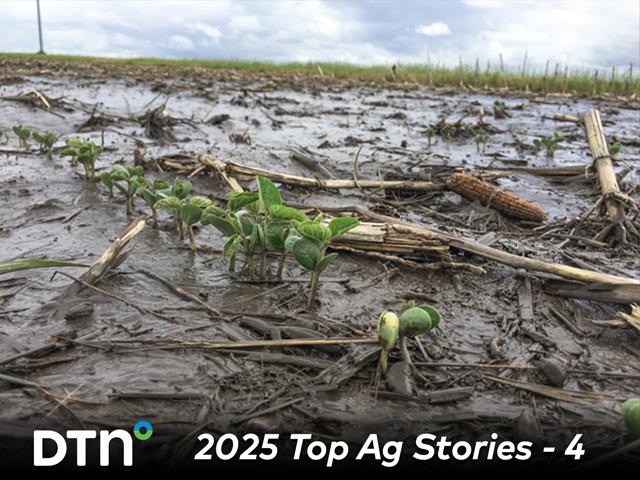Precision Ag Brings Big Cash Home
Study Shows Precision Ag Brings Big Gains to Bottom Line
Precision agriculture practices are having significant benefit on farming's bottom line, and also move the sticks on environmental goals in the United States. With higher adoption rates, according to Environmental Benefits of Precision Ag, a study published by the Association of Equipment Manufacturers (AEM), precision practices would result in additional, significant increases in crop production, reduced uses of herbicides and fuels, and reduced water usage.
"The key takeaway from this study is ... we're doing things really well in ag," said Curt Blades, AEM senior vice president of Ag Sevices. "But, with some minor adjustments of the levers here and there, it's a completely different story."
This study was co-developed with the American Soybean Association, CropLife America, and National Corn Growers Association. In reality, the report was largely written for a non-farming audience, targeting such groups as environmental organizations and regulatory agencies. But it produced numbers that will catch the eyes of any farm manager.
The paper calculated benefits earned from technologies, including auto guidance, section controls, variable rate, telematics (fleet management) and precision irrigation. It made judgments based on these technologies for productivity, and for fertilizer, herbicide, fossil fuel and water use.
By leveraging the five precision ag technologies, the AEM study concludes farmers have already seen a 4% increase in production, 7% reduction in fertilizer use, 9% reduction in herbicide applications, 6% reduction in fossil fuel use and a 4% reduction in water use.
P[L1] D[0x0] M[300x250] OOP[F] ADUNIT[] T[]
"Those are permanent gains, not gains of promise," Blades said.
Increasing adoption rates for precision ag to 90% would produce even more significant benefits. At that rate, the AEM paper reports a 6% increase in crop production, 14% reduction in fertilizer use, 15% reduction in herbicide use, 16% reduction in fossil fuel use and 21% reduction in water consumption.
Adoption rates of precision ag practices vary by geography and crops. "Adoption has come first to crops where it makes the most sense -- corn and soybeans (before) wheat and sorghum," Blades said. The report found evidence that perhaps 60% to 70% of corn and soybean growers in central Iowa have adopted precision agriculture technology. In Missouri, where fields are more challenging to negotiate than the long, straight rows of central Iowa, adoption rates are a bit less.
On the ground, the numbers are big. Precision ag has reduced herbicide use by 30 million pounds, the AEM report stated -- a good deal of that from better targeting. With that broader adoption rate of 90%, herbicide use could decline by another 48 million pounds.
Same story with fuel. "Everything you do in the tractor impacts fuel efficiency, for example. Every gallon of fuel that you burn is real money," Blades said. Telematics shows (operators) consume a fair amount of fuel idling the tractor to keep the air conditioning running or overlapping passes in the field. "When you incorporate that data and show the farmer what that means to them from a fuel savings standpoint ... I think you're going to see some behavior changes. There is benefit for the farm and there is environmental benefit."
AEM calculates the fuel reduction already recognized from precision ag technology removes an amount of carbon equal to taking 200,000 cars off the road.
There is economic and environmental benefit in knowledge -- for example how precision ag meshes with irrigation. "I don't think a farmer wants to run irrigation by the calendar, but they may feel they have to," Blades said. "But when you have ground truthing that tells you don't need to run irrigation today, that saves fuel and water, that reduces runoff. That makes good sense to the farmer and with the societal gains, that makes a big difference."
As farmers are adapting precision agriculture practices, Blades said the non-farming community is paying attention. "Some analysts point to John Deere stock price and why it has been so solid the last year is because of their shift to focus more heavily on technology and the environmental benefits of technology. There are lots of audiences paying attention to this beyond the farm audience."
Dan Miller can be reached at dan.miller@dtn.com
Follow him on Twitter @DMillerPF
(c) Copyright 2021 DTN, LLC. All rights reserved.




